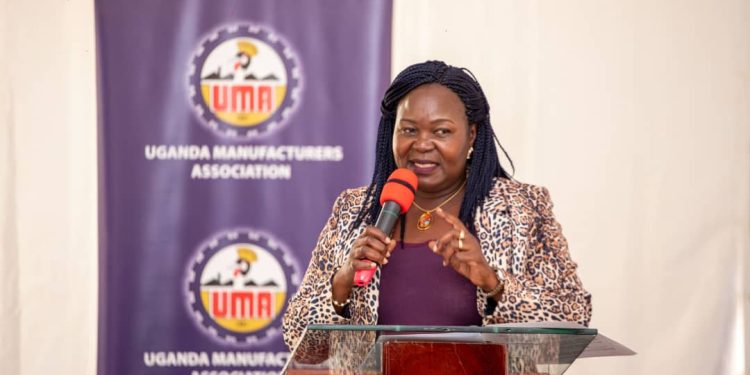The government has promised to give priority to local manufacturers while purchasing items used in the energy sector.
The Minister for Energy Mining and Mineral Development, Dr Ruth Nankabirwa, said going forward, government will be locally sourcing most of the items used in the distribution and generation of Electricity.
These include transformers, and steel and concrete poles, among others.
She further revealed that a memorandum of understanding will be signed between the relevant agencies and the local manufacturers.
She made the remarks during a stakeholder engagement between the Energy Ministry and the Manufacturers under their umbrella body Uganda Manufactures Association (UMA).
The engagement was organized in conjunction with the Electricity Regulatory Authority.
The UMA Board Chairperson, Deo Kayemba, had earlier made a case for the prioritization of local content by the government.
He stressed that in Uganda, there are competent manufacturers that can supply the energy sector.
He revealed that these have the capacity to tap into the Shs 30 trillion worth of local markets which can be redirected through harnessing government purchases.
“We may not supply everything but some of the mega projects happening in the country can be supplied by the sector where there is capacity,” he said.
He gave examples of items like Pylons, Mono Poles, and Steel Poles used for power transmission and distribution, Cement and Rebars, Transformers and Switch Gears, and Street Lighting infrastructure, among others.
He also noted that the cost of power as a component of the total manufacturing cost ranges between 5% to 35% depending on the size and nature of the industry.
“The high cost (currently ranging between UGX 214.2 to 646.9/kWh) is one of the contributing factors limiting the continuity of businesses, especially SMEs which comprise UMA’s membership and are important for our upstream and downstream economic agents. Hon. Minister, in Uganda, any cost which goes beyond the final tariff of UGX 200 (including all taxes) for an industry is a disincentive to the competitiveness of our products both regionally and globally,” he said.
Kayemba requested for the full implementation of the 5-US cents per KWh across the entire manufacturing sector as already promised by H.E. the President to be fast-tracked.
In response, Nankabirwa said there is a work plan that will be followed in bringing the prices down. She said it may not hit 5 US cents immediately due to the economic implications but it will be less than the current prices.
She also told manufacturers that the government has also developed the National Electrification Strategy (NES), 2021 to look beyond 2025, which targets to achieve universal access by 2030 by connecting 10.4 million households through on-grid and off-grid solutions.
She revealed that to meet the financial requirement of the free connections policy, the government has partnered with World Bank to implement the US$ 638 million Electricity Access Scale Up Project (EASP) which targets to achieve up to 1,073,500 connections for households, commercial enterprises, mining centres, public institutions and industrial parks over the 5-year implementation period.
She said the EASP is expected to be effective by the second quarter of the fiscal year 2023 and asked UMA members to take advantage of the different business opportunities that will be created by the project.











